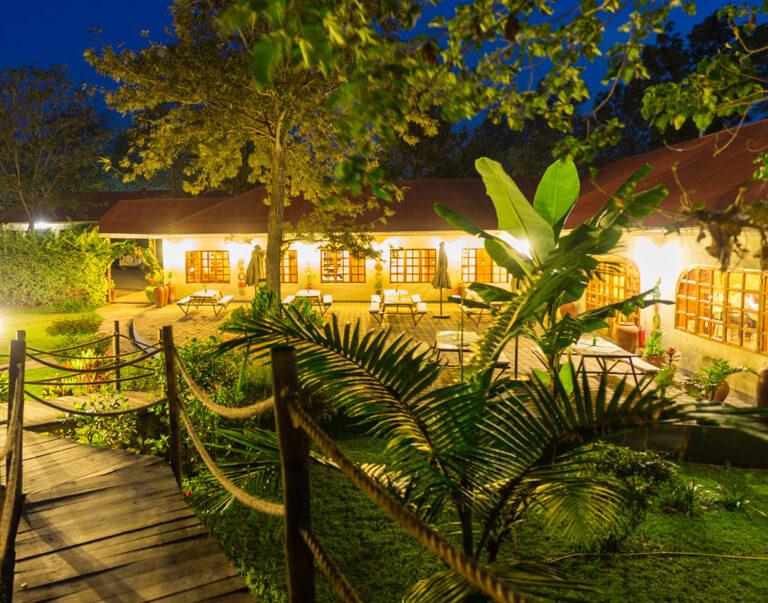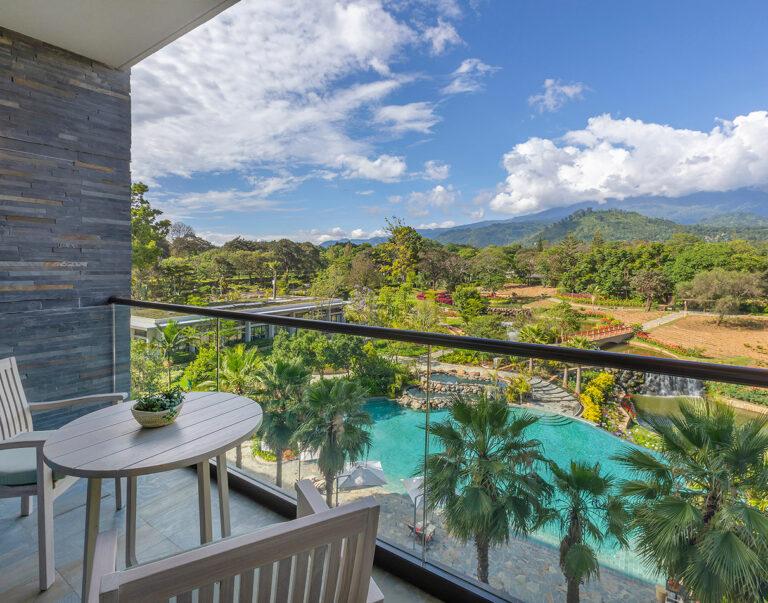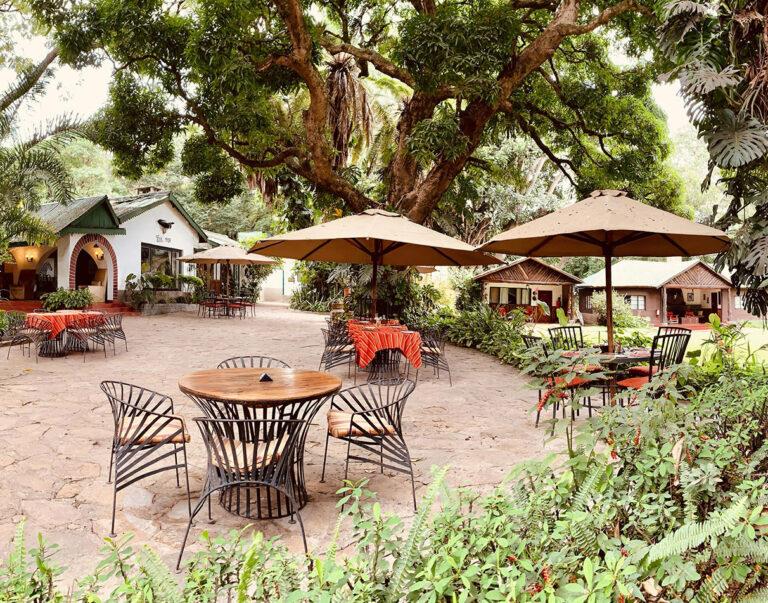Marangu Route
Distance
Approximately 70 kilometers (43.5 miles)
Located
Tanzania, Kilimanjaro
Best time to visit
year-round
5 STAR RATED TOUR OPERATOR IN TANZANIA READ OUR REVIEWS ★★★★★
Marangu Route
The Marangu Route is one of the most popular and well-traveled paths to the summit of Mount Kilimanjaro, often referred to as the “Coca-Cola Route” due to its popularity and ease of access. This route is known for its unique distinction as the only Kilimanjaro route that offers permanent huts along the way, providing climbers with shelter and comfortable beds throughout the trek. These huts are an excellent alternative to camping, which is required on other routes, making the Marangu Route a preferred option for those seeking a more comfortable and sheltered experience on the mountain.
The Marangu Route begins at the Marangu Gate and climbs steadily through lush rainforest, progressing through various ecological zones until it reaches the summit at Uhuru Peak, the highest point on Mount Kilimanjaro. The route is often considered one of the easiest and most straightforward paths to the summit due to its gradual ascent, but it still presents significant challenges, especially with the high altitude, which can cause altitude sickness.
In this comprehensive guide, we’ll walk you through the layout of the Marangu Route, discuss the challenges you might face, and share useful tips to ensure you have the best possible experience while climbing Kilimanjaro. From the lower rainforest levels to the barren, icy summit, the Marangu Route offers a diverse range of landscapes, stunning views, and a rich climbing history that makes it a rewarding adventure.
Overview of the Marangu Route
| Aspect | Details |
|---|---|
| Starting Point | Marangu Gate (1,860 meters or 6,100 feet) |
| Total Distance | Approximately 72 km (45 miles) round-trip |
| Duration | Typically 5 to 6 days |
| Summit Success Rate | Moderate, due to a shorter acclimatization period |
| Accommodation | Mountain huts with beds, bunks, and mattresses |
| Difficulty Level | Moderate, but challenging at higher altitudes |
| Best Time to Climb | Dry seasons: January to mid-March and June to October |
| Unique Features | Only route with hut accommodations; more affordable than other routes |
Detailed Day-by-Day Itinerary of the Marangu Route
The Marangu Route generally takes 5 days to complete, with an optional extra day at Horombo Hut for acclimatization. Below is a typical itinerary, highlighting each day’s trekking distance, elevation gain, and key highlights.
| Day | Destination | Elevation | Distance | Trekking Hours | Description |
|---|---|---|---|---|---|
| Day 1 | Marangu Gate to Mandara Hut | 1,860 m to 2,720 m | 8 km (5 miles) | 4–5 hours | Begin your trek through lush rainforests. Mandara Hut is located in a clearing within the rainforest. Here, you might spot some wildlife, including blue monkeys. |
| Day 2 | Mandara Hut to Horombo Hut | 2,720 m to 3,720 m | 12 km (7 miles) | 6–8 hours | The landscape transitions from rainforest to heath and moorland. You’ll see giant groundsels and lobelias. The trail opens up to views of Mawenzi Peak. |
| Day 3 | Horombo Hut (Acclimatization Day) | 3,720 m | Optional | N/A | Spend an extra day at Horombo Hut to aid acclimatization. Take a short hike to Zebra Rocks at 4,000 m. |
| Day 4 | Horombo Hut to Kibo Hut | 3,720 m to 4,703 m | 10 km (6 miles) | 5–7 hours | A long, steady climb to alpine desert. Reach Kibo Hut, where you’ll rest before your summit attempt. |
| Day 5 | Kibo Hut to Uhuru Peak, then descend to Horombo Hut | 4,703 m to 5,895 m, then down to 3,720 m | 21 km (13 miles) | 10–15 hours | Start your summit attempt around midnight. After reaching Uhuru Peak, descend to Kibo and Horombo Hut. |
| Day 6 | Horombo Hut to Marangu Gate | 3,720 m to 1,860 m | 20 km (12 miles) | 5–7 hours | Descend through moorland and rainforest. Upon arrival at the gate, receive your Kilimanjaro certificate for a successful climb. |
Total Distance: 72 km (45 miles)
Accommodation on the Marangu Route
The Marangu Route features mountain huts with bunk beds, mattresses, and communal dining areas, which distinguishes it from other routes where camping is required. The three main huts along the route are:
- Mandara Hut: Located at 2,720 m, offering dormitory-style rooms with 6–8 bunk beds.
- Horombo Hut: Situated at 3,720 m, this hut is more spacious and serves as an acclimatization stop.
- Kibo Hut: At 4,703 m, this is a basic hut with dormitory beds and a common area, where climbers prepare for the summit.
Why Choose the Marangu Route?
- Hut Accommodation: Ideal for climbers who prefer shelter over tents. This makes it a good choice during the rainy season, as climbers can avoid wet and muddy conditions.
- Shorter Itinerary: The Marangu Route is typically completed in 5 days, which makes it one of the quickest routes. However, a 6-day option is available, which can significantly improve acclimatization and success rates.
- Affordability: Since the route has a shorter itinerary and uses huts, it’s usually more budget-friendly than other Kilimanjaro routes that require camping gear.
Best Time to Climb the Marangu Route
The ideal times to trek the Marangu Route are during dry seasons when the weather is more favorable, specifically:
- January to mid-March: Clear skies, warmer temperatures, and stable weather conditions make this period popular.
- June to October: Another dry season, though temperatures can be colder, especially at the summit. This is also a peak climbing period, so the route may be busier.
Avoid: April, May, and November due to heavy rainfall, which can make trails slippery and reduce visibility.
Acclimatization Tips for the Marangu Route
Since the Marangu Route has a relatively rapid ascent, altitude sickness is a concern. To increase your chances of reaching the summit successfully, consider these acclimatization strategies:
- Take the 6-Day Option: Spending an extra day at Horombo Hut (Day 3) allows your body to adjust to the altitude, improving your chances of success.
- Climb High, Sleep Low: On the acclimatization day, hike to a higher elevation and return to Horombo Hut to sleep. This technique aids in altitude adjustment.
- Stay Hydrated: Drinking plenty of water can help your body cope with altitude.
Marangu Route Altitude Profile and Graph
A graph illustrating the Marangu Route’s altitude profile helps visualize the ascent and descent, highlighting key points where acclimatization is crucial.| Point | Elevation (meters) | Elevation (feet) |
|---|---|---|
| Marangu Gate | 1,860 m | 6,100 ft |
| Mandara Hut | 2,720 m | 8,920 ft |
| Horombo Hut | 3,720 m | 12,200 ft |
| Kibo Hut | 4,703 m | 15,430 ft |
| Uhuru Peak | 5,895 m | 19,341 ft |
Challenges on the Marangu Route
- Rapid Ascent: The short itinerary may not provide sufficient acclimatization for all climbers, leading to a higher risk of altitude sickness.
- Cold Temperatures at Kibo and Summit: As you approach the summit, temperatures can drop significantly, requiring proper gear and layering.
- Summit Night: The summit attempt is typically made at midnight, meaning you’ll trek in the dark and cold. The ascent from Kibo Hut to Uhuru Peak is steep and challenging.
Comparison Table: Marangu Route vs. Other Routes
| Route | Accommodation | Duration | Distance | Difficulty | Scenery | Popularity |
|---|---|---|---|---|---|---|
| Marangu | Huts | 5–6 days | 72 km | Moderate | Rainforest | High |
| Machame | Camping | 6–7 days | 62 km | Moderate-Hard | Varied landscapes | Very High |
| Lemosho | Camping | 7–8 days | 70 km | Moderate | Lush forests | Moderate |
| Rongai | Camping | 6–7 days | 73 km | Moderate | Remote | Low |
Packing List Essentials for the Marangu Route
- Clothing: Layered clothing, including thermal base layers, a fleece jacket, and a down jacket.
- Footwear: Waterproof trekking boots with good ankle support.
- Sleeping Gear: Though huts have mattresses, a warm sleeping bag (rated -10°C or lower) is essential for cold nights.
- Trekking Poles: These can help with balance, especially on summit night.
- Hydration System: Staying hydrated is crucial, so bring a water reservoir or water bottles with insulation.
The Marangu Route offers a blend of unique comforts and challenges, making it suitable for both beginners and experienced climbers looking for a classic Kilimanjaro experience. Proper planning, acclimatization, and the right mindset will help you make the most of your journey to Uhuru Peak on this historic and scenic route.
Where to stay in and near the Ngorongoro Conservation Area

Africa View Lodge

Gran Melia Hotel

Hatari Lodge

